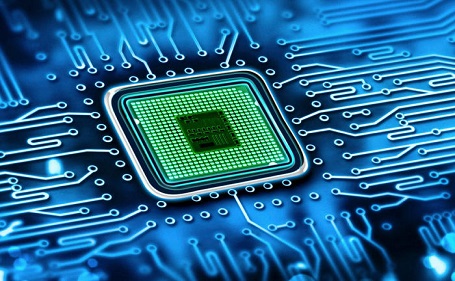Microprocessor is a semiconductor programmable device which fetches, decodes and executes instructions. The set of instruction may vary from processor to processor. In microprocessors, 3 buses are mainly used. They are:
Address Bus, Data bus and Control bus.
The Control bus is bidirectional in nature. Microprocessor have no internal memory, while microcontroller have internal memory.
Register:
A register is a group of flip-flops, which acts as a temporary data storing circuit, It will retain the present state, until the next state occurs. The microprocessor will executes instructions with respect to the nature of instructions. In other words, with respect to the nature of instructions, microprocessor works.
Evolution of Microprocessors:
In this blog, Evolution of Microprocessor Lecture Notes is discussed. Evolution of processors can be classified into five generations.
1. First Generation Processors
2. Second Generation Processors
3. Third Generation Processors
4. Fourth Generation Processors
5. Fifth Generation Processors
In 1971, Intel Corporation developed their first microprocessor, INTEL 4004.
INTEL 4004 is a 4 bit processor,
A 4 bit processor can handle only 4 bit data at a time.
The main component in IC manufacture is PMOS.
PMOS – P channel Metal Oxide Semiconductor field effect transistor.
Disadvantages of PMOS
1. Low Speed
2. PMOS is not compactable to TTL logics.
First Generation Processors:
4 Bit Processors
INTEL 4004
INTEL 4040
FAIR CHILD PPS – 25
NATIONAL IMP – 4
ROCK WELL PPP – 4
MICRO SYSTEMS INTEL MC -1
8 Bit Processors
INTEL 8008
NATIONAL IMP – 8
ROCKWELL PPS – 8
AMI 7200
MOSTEK 5065
16 Bit Processors
NATIONAL IMP/16
NATIONAL PACE
Second Generation Processors:
NMOS Technology is used in second generation processors. NMOS is compactable to TTL Logic. So the speed of the IC is also high.
8 Bit Processor
INTEL 8080
INTEL 8085
FAIRCHILD F – 8
MOTOROLA M 6800
MOTOROLA M 6804
NATIONAL CMP 8
RCA COSMAC
MOS TECH – 6500
SIGNET ICS 2650
ZICOG Z80
12 Bit Processor
INTERSIL 6100
TOSHIBA TLCS – 12
16 Bit Processor
TITMS
DEC – WDMCP – 1600
GENERAL INSTRUMENT CP 1600
Third Generation Processors:
Third Generation Processors are 16 bit processors. The IC manufacturing component in third generation is HMOS.
HMOS – High Density Metal Oxide Semiconductor field effect transist5or.
Here speed of the processor is very high.
INTEL 8086
INTEL 8088
INTEL 80186
INTEL 80286
MOTOROLA 68000
MOTOROLA 68010
ZILOG Z 8000
NATIONAL NS 16016
TEXAS INSTRUMENTS TMS 99000
Propagation Delay:
Propagation Delay is the time gap for the output to change when the input signal changes.
Propagation Delay α 1/speed of processor
That is, propagation delay is inversely proportional to the speed of processor.
Since, propagation delay is less to HMOS, Speed of HMOS is very high.
Speed x Power = nano seconds x milli watts (ns x mw) = Pico Joules (PJ)
HMOS Technology has 4 times better performance than NMOS.
Density of states of HMOS is also four times (or 3 times) better than NMOS Technology.
Density of States:
Density of states gives the number of gates included in an IC.
Fourth Generation Processors:
Fourth Generation Processors are 80386 and 80486. In fourth generation processors, the manufacturing technique used is HCMOS.
HCMOS – High density Complementary Metal Oxide Semi-conductor field effect Transistor.
INTEL 80386
INTEL 80486
MOTOROLA MC 88100
NATIONAL NS 16032
MOTOROLA M 68020
MOTOROLA M 68030
BELLMAC 32
Tags:
Microprocessors

